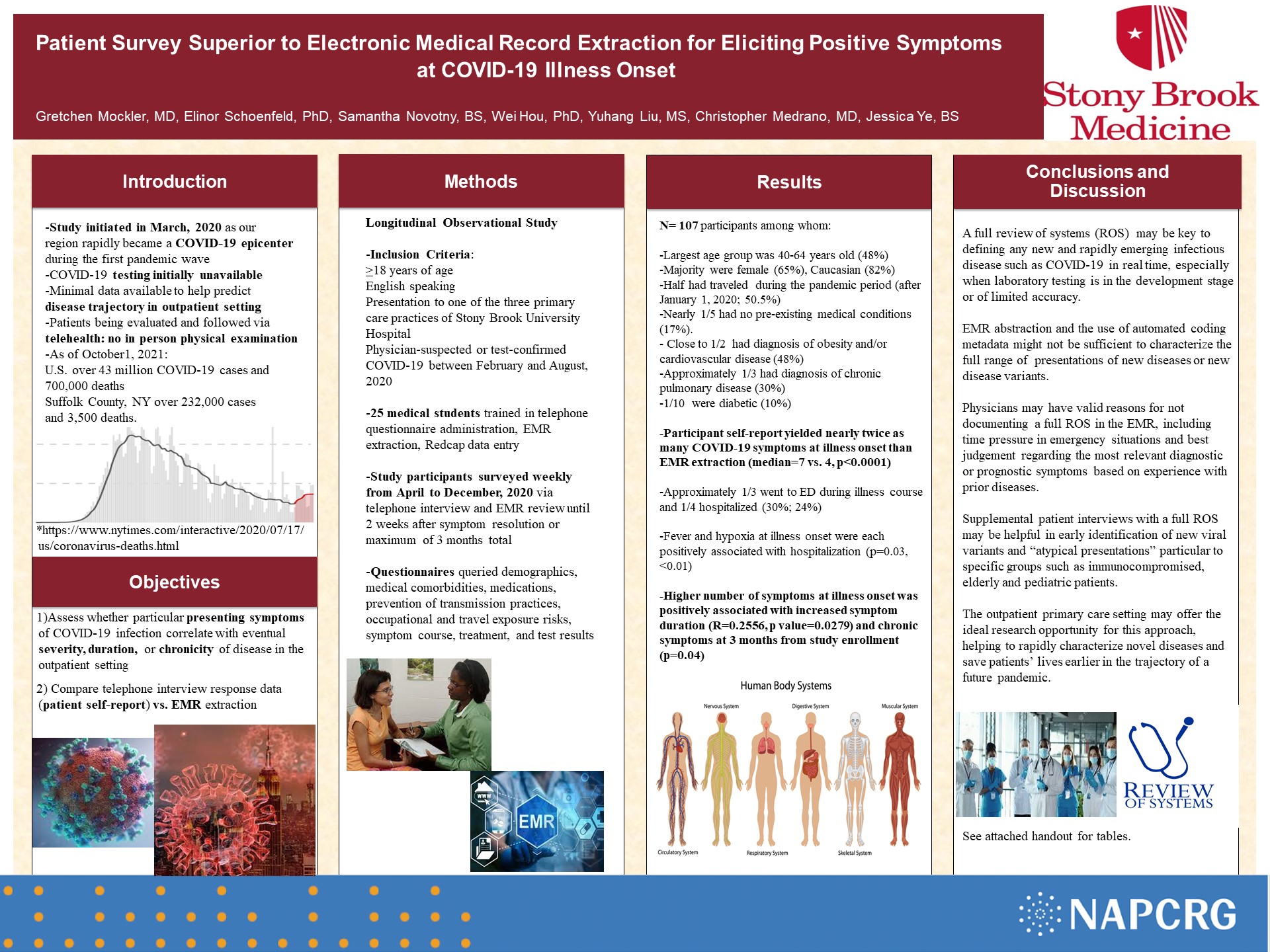PCR044: Patient Survey Superior to EMR Extraction for Eliciting Positive Symptoms at COVID-19 Illness Onset
Gretchen Mockler, MD; Elinor Schoenfeld, PhD; Samantha Novotny, BS; Wei Hou, PhD; Yuhang Liu, MS; Christopher Medrano; Jessica Ye, BS
Abstract
Objective: To characterize presenting symptoms of COVID-19 infection in the outpatient setting and evaluate for correlation with disease severity, duration, and chronicity.
Study Design and Analysis: We collected survey data from both patient telephone interviews and electronic medical record (EMR) extraction. Patient characteristics were described using means and percentages when appropriate. Percentage of symptoms by severity level, symptom duration, and escalating medical care were calculated. To evaluate association of risk factors with severity, duration and chronicity of symptoms, logistic regression was used. Patient characteristics and repeat measures were evaluated as risk factors in logistic regression.
Setting or Dataset: 107 patients with suspected and confirmed COVID-19 cases at the 3 primary care practices of Stony Brook University Hospital between March and December, 2020.
Population Studied: adult, English speaking primary care patients with suspected or confirmed COVID-19
Intervention/Instrument: patient self-report telephone survey, EMR data extraction survey
Outcome Measures: symptom duration, symptom severity, persistence of symptoms at 3 month time point
Significant Results: Patient self-report survey elicited nearly twice as many symptoms described at illness onset vs. those recorded in the EMR. Higher number of symptoms at illness onset was associated with increased symptom duration and chronicity.
Conclusions: Early in the setting of newly emerging infectious diseases, particularly those such as COVID-19 which involve multiple organ systems, patient self-report of symptoms of illness rather than EMR extraction alone may be crucial both for identifying cases and in order to characterize pathophysiology of disease in real time.

Jack Westfall
jwestfall@aafp.org 11/20/2021great poster and abstract. thanks